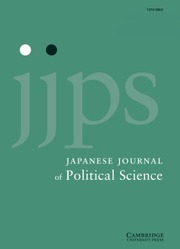Article contents
Housing wealth and political outcomes: a multi-dimensional analysis at the local level in South Korea
Published online by Cambridge University Press: 15 October 2024
Abstract
The current study explores the relationship between housing wealth and political outcomes at the regional level in South Korea, providing insights that extend beyond the scope of previous research, which has primarily concentrated on individual or macro levels. It focuses specifically on district-level dynamics within the unique context of South Korea to uncover the underlying mechanisms of housing politics. The findings indicate a clear trend: as the average price of apartments – a key indicator of housing wealth – rises in a district, there is an increased tendency for residents to support candidates from the conservative party. Furthermore, the data-driven analysis highlights the significance of housing wealth amidst various regional characteristic variables, particularly in its capacity to distinguish the target regions. By employing comprehensive data and a multi-dimensional analytical approach, this study unravels the intricate relationship between housing wealth and political outcomes within a regional context. In doing so, it greatly enhances our understanding of the impact of housing wealth on political outcomes, bridging the gap between individual behaviours and national trends, and underscoring the pivotal role of housing wealth in shaping regional political dynamics.
- Type
- Research Article
- Information
- Copyright
- Copyright © The Author(s), 2024. Published by Cambridge University Press
References
A correction has been issued for this article:
- 4
- Cited by
Linked content
Please note a has been issued for this article.


